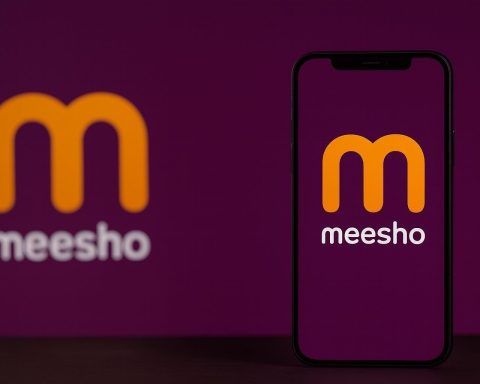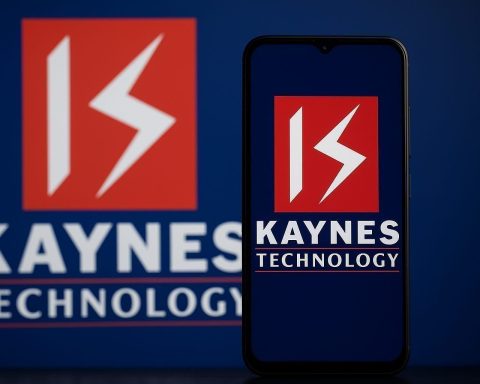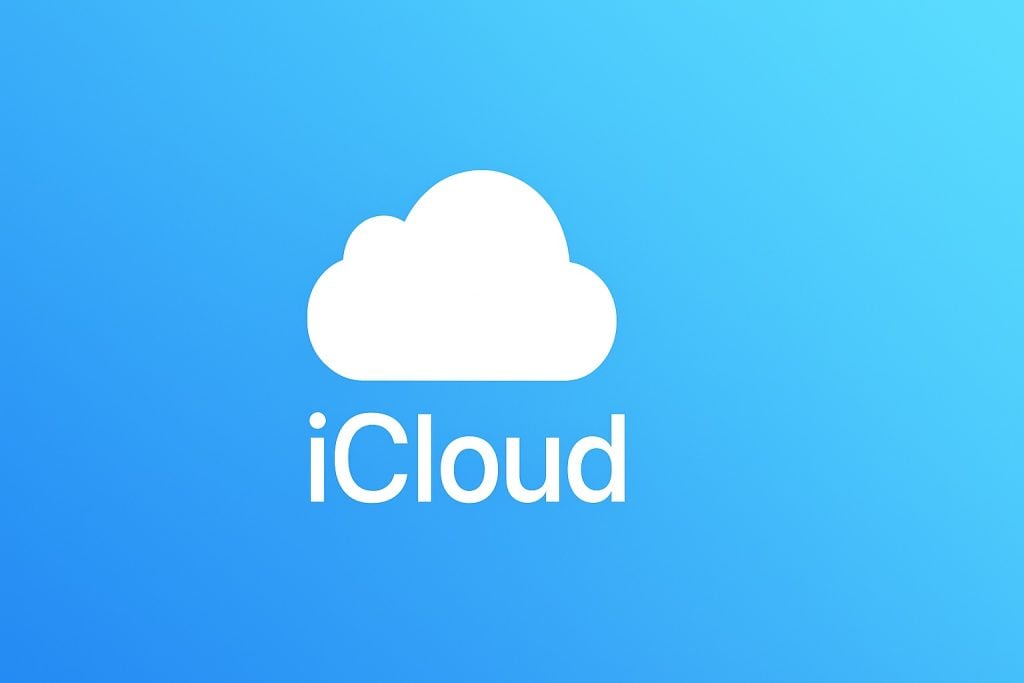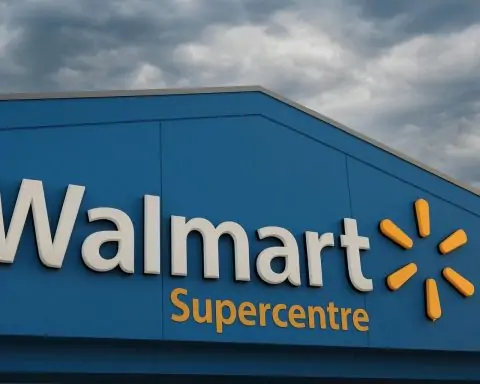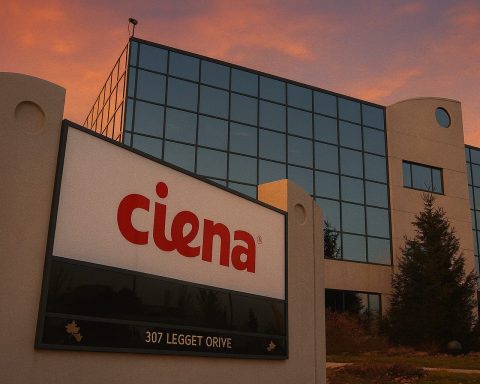- By September 2023, 71% of Finnish households had gigabit fixed broadband (1 Gbps) and 78% had 100 Mbps+ speeds, driven by 61% fiber access by end-2023.
- Finland aims for every household to have at least 100 Mbps connectivity (upgradeable to 1 Gbps) by 2025, with a national plan to reach full 1 Gbps nationwide by 2030.
- 4G coverage exceeds 99% of the population and 5G coverage reached about 88–90% by early 2023, with Elisa reporting 90% 5G home-area coverage by end of 2023 and DNA at 86% by March 2023.
- Starlink became available in Finland in late 2022, with a customer price around €65 per month and a one-time hardware fee of about €565, delivering 100–200 Mbps down, 20–40 ms latency, and 10–15 minutes setup.
- OneWeb completed its first constellation phase in 2023 and demonstrated polar service in Finland, achieving about 195 Mbps down and ~70 ms latency in government tests.
- Elisa had about 3.6 million mobile subscribers in 2023, Telia Finland about 2.7 million, and DNA roughly 2.73 million; DNA also became Finland’s largest fixed broadband provider in 2021 and plans to replace all copper by 2025.
- Urban areas offer around 92% of households with 100 Mbps fixed broadband, while rural areas hover around 42% for 100 Mbps, with overall urban-rural high-speed coverage at 86% and 53% respectively by end-2023.
- Broadband access was declared a legal right in 2010, taking effect July 2010 with minimum 1 Mbps, priced around €30–€40 per month.
- Regulation under Traficom supports competition among Elisa, Telia, and DNA through local loop unbundling and early 5G spectrum auctions, while upholding net neutrality and pursuing a Digital Compass 2030 plan.
- Finland ranked #1 in the EU DESI in 2022 and posted the highest per-capita mobile data use in Europe at about 72 GB per month in 2023.
Finland is renowned for its quiet efficiency, and nowhere is this more evident than in its internet infrastructure. Over the past two decades, Finland has transformed into a connectivity powerhouse, offering citizens some of the world’s fastest and most accessible internet services. From ubiquitous fiber broadband in cities to 5G mobile networks blanketing the country, Finland’s digital foundation rivals – and in some ways exceeds – better-publicized tech leaders. This report explores how Finland achieved this, examining its national broadband infrastructure, mobile and satellite internet services, urban-rural connectivity, affordability, key industry players, and the forward-thinking policies that made it possible.
National Broadband Infrastructure: Fiber, DSL, and Cable
Finland’s fixed broadband landscape has evolved dramatically. Historically, many Finnish households relied on DSL (copper) lines or cable modems for internet, but today fiber-optic connectivity is ascendant. By late 2023, high-speed fixed broadband (100 Mbps or above) was available to 78% of Finnish households, up from 73% a year earlier [1]. Even gigabit-level networks (1 Gbps) reached 71% of households as of September 2023 [2], reflecting an aggressive push to upgrade infrastructure. This surge is largely driven by fiber rollout: 61% of Finnish homes had access to fiber-optic broadband by the end of 2023, a jump of 9 percentage points in one year [3].
Crucially, Finland’s broadband strategy has been fiber-first, complemented by cable in urban areas. Cable TV networks (upgraded for internet) cover most cities, but true future-proofing is coming from fiber deployments [4]. The map below illustrates fiber availability by region, with darker areas showing higher coverage in 2023. Southern and western provinces now enjoy near-ubiquitous fiber (some approaching 80% of households), while more remote eastern/northern regions, though still behind, have seen double-digit percentage growth in fiber access in just one year [5] [6]. This rapid progress is fueled by heavy investments from major telecom operators and new entrant fiber companies, as well as community-level initiatives. Notably, smaller municipal broadband providers (many part of the historical “Finnet” group of local telcos) have laid fiber in towns and rural areas, often using innovative cost-cutting techniques like micro-trenching [7]. These collaborative efforts have helped Finland transition away from legacy copper networks; for example, DNA (one of the big operators) plans to completely replace its remaining copper lines with modern fiber or wireless solutions by 2025 [8].
This fiber expansion hasn’t been confined to cities. While cities like Helsinki, Tampere or Turku now boast extensive fiber-to-the-home, the government and EU funds have supported fiber builds in sparsely populated areas where commercial investment was lacking [9]. As a result, many villages and remote municipalities can access fixed broadband far superior to older satellite or dial-up links. By 2025, Finland aims for every household to be within reach of at least a 100 Mbps connection (upgradable to 1 Gbps) [10], effectively making gigabit broadband the new baseline standard. This aggressive target aligns with EU digital goals and underscores Finland’s commitment to bridging any remaining gaps in its fixed infrastructure.
Mobile Internet: 4G and 5G Ubiquity
If fiber is the backbone of Finland’s internet, mobile networks are its beating heart. Finns are among the world’s most enthusiastic mobile internet users, and Finnish operators have built 4G and 5G networks that blanket virtually the entire country. 4G LTE coverage in Finland is practically universal (reaching well over 99% of the population), ensuring even those outside fiber footprints have broadband via wireless. On top of that, Finland was an early adopter of 5G – and it shows. By early 2023, 5G signals reached approximately 88–90% of Finns [11] [12], and operators continue to light up new 5G sites across the map. For instance, Elisa (the largest operator) reported its 5G network covered 90% of residents’ home areas by the end of 2023 [13], and DNA (another major carrier) had 5G available to 86% of the population by March 2023 [14]. In practice, all cities and towns and even most rural centers now have 5G service, with only the farthest-flung pockets still relying on 4G.
It’s not just coverage – mobile internet quality and usage in Finland are world-class. Thanks to ample spectrum and a competitive three-player market (Elisa, Telia, DNA), Finland’s mobile speeds are among the fastest anywhere. Median mobile download speeds hover around 100–140 Mbps on 5G networks [15] [16], and even 4G provides solid performance in most areas. In fact, independent tests consistently find Finland near the top of global mobile speed rankings, reflecting the extensive deployment of 5G and advanced LTE-A technology. DNA, for example, has been clocked with the fastest 5G median downloads (over 260 Mbps) among Finnish carriers [17]. The mobile network reliability is also excellent – over 99% availability of at least a 3G/4G signal on Elisa’s network [18] – meaning users rarely lose connectivity.
Perhaps the most striking aspect of Finland’s mobile internet is how integral it is to daily life, often as a substitute for fixed lines. Mobile data plans in Finland are typically truly unlimited and affordable, which has encouraged massive data consumption. The average Finn uses an astonishing amount of mobile data – about 72 GB per month per person as of 2023 [19] – by far the highest in Europe and one of the highest globally. (For comparison, this is nearly double the European average per capita data use [20] [21].) This super-heavy usage is possible because Finnish operators long ago moved to flat-rate unlimited data plans, a rarity elsewhere. By the end of 2021, the majority of Finnish mobile subscriptions were unlimited data, and capped data plans had virtually disappeared from the market [22]. Consequently, the cost per gigabyte in Finland is extremely low – one analysis found it as cheap as €0.03 per GB (PPP) on 4G plans, the lowest in Europe [23]. In practical terms, a consumer can get a high-speed mobile plan with unlimited data for around €20–30/month, making mobile broadband a viable primary connection for many households.
All this has led to some unique Finnish trends. As of 2022, roughly 43% of households exclusively use mobile broadband for their home internet access [24], bypassing fixed lines entirely. It’s common for a family to have a 4G/5G Wi-Fi router at home running on a mobile network, especially in areas where fiber or cable hasn’t yet reached. The mobile networks are robust enough to handle this load – in fact, data-only “home 5G” subscriptions (Fixed Wireless Access) account for a large portion of Finland’s total mobile data traffic [25]. The operators have embraced this trend: all three offer 5G Fixed Wireless products to deliver ultra-fast broadband to rural and suburban homes where running fiber is costly [26]. With 5G’s improved capacity and the ongoing shutdown of older 3G networks (frequencies are being refarmed to 4G/5G), Finland’s wireless networks are only getting faster and more efficient. It’s also worth noting Finland’s mobile leadership is deeply rooted – the country was home to Nokia and made the world’s first GSM call in 1991, and that legacy of innovation continues in the 5G era (e.g. Finnish carriers were among the first in Europe to deploy Standalone 5G cores in 2023–24 [27]).
In summary, Finland’s mobile internet can be characterized by extensive coverage, extraordinary usage, competitive pricing, and cutting-edge tech. Whether streaming Ultra HD movies in a remote Lapland cabin or running a business on the go in Helsinki, Finnish users enjoy a mobile experience that is truly among the world’s best.
Satellite Internet: Starlink, OneWeb, and Beyond
While terrestrial networks cover most of Finland, satellite internet has emerged as an important piece of the puzzle for remote and rural connectivity. In a country with vast sparsely populated areas (from the Arctic Lapland fells to the outer archipelago islands), reaching the “last few percent” of users with high-speed internet is challenging. Finland has thus welcomed the new generation of low-Earth orbit (LEO) satellite services like SpaceX’s Starlink and OneWeb, which can deliver broadband to virtually any location.
Starlink became available in Finland in late 2022 [28] [29] after SpaceX launched additional polar-orbit satellites to expand coverage to high latitudes. Finnish users can now order Starlink’s kit and receive connectivity almost anywhere in the country – an especially attractive option for rural homes, wilderness cabins, or maritime use. Priced at around €65 per month for unlimited data (plus a one-time hardware fee of ~€565 for the dish and router) [30], Starlink in Finland isn’t cheap compared to terrestrial broadband, but it can be transformative in locations with no fiber or reliable mobile signal. A field test by the University of Oulu’s 6G research team in 2023 confirmed that Starlink can deliver 100–200 Mbps download speeds in remote northern Finland [31] [32] – more than enough for typical home and business needs. Uplink speeds in the test ranged from 15–40 Mbps, and latency was relatively low (20–40 ms), suitable for video calls and even online gaming [33]. Researchers noted the connection setup time was 10–15 minutes, reflecting the still-growing satellite constellation density at Finland’s latitude [34]. Overall, they concluded Starlink could be a reliable internet option for rural and remote regions in Finland, with the caveat that performance can dip if there are obstructions like dense forest canopy [35] [36].
One interesting discovery was that Starlink completely loses signal near Finland’s eastern border in some spots. This is due to Starlink’s geofencing that blocks coverage over Russia (which extends a bit into Finnish territory along the border) [37]. In tests just 10–20 km from the Russian frontier, the team could not establish a connection because the satellites shut off to avoid the restricted zone [38]. This is a known limitation (and political concern) for satellite services in border regions. Nonetheless, for the vast majority of Finland’s geography, Starlink now provides a viable high-speed link. Already, some off-grid homes and remote work sites are adopting it – for example, cottages deep in the forests of Kainuu or scientific research stations in Lapland can now get broadband without waiting for fiber or cell towers.
OneWeb, another LEO satellite network (partly owned by the UK and French companies), has also set its sights on Finland. OneWeb completed its first phase constellation in 2023 and began polar service, and Finland was actually one of the first places to see OneWeb in action. In 2021, Finland’s state-run secure communications provider Erillisverkot partnered with OneWeb to demonstrate LEO satellite broadband for government agencies [39]. At a test in the UK (Westcott), Finnish officials observed OneWeb delivering ~195 Mbps with ~70 ms latency, and seamless satellite handovers – performance deemed suitable for critical public safety use in Arctic areas [40] [41]. Erillisverkot’s CTO noted that Finland is a global frontrunner in exploring new space-based solutions for public safety, given the need to connect agencies across the far north [42]. OneWeb’s polar-orbit satellites (which provide continuous coverage above 50°N latitude) are expected to bolster connectivity for Finland’s far north, including Lapland’s wilderness, and for specific use cases like military, rescue, or maritime communications in the Baltic and Arctic seas. While OneWeb doesn’t yet sell direct-to-consumer service, it works through partners – so we may see Finnish telecom companies offering enterprise-grade satellite links (for example, to connect remote 5G cell towers or provide backup links to hospitals).
Beyond Starlink and OneWeb, traditional geostationary satellites also serve Finland, though with limited capacity. Companies like Viasat or Eutelsat have provided Ka-band satellite broadband in Europe for years, and a Finnish consumer in an isolated farm could use those (with typical speeds 20–50 Mbps and higher latency ~600 ms). However, uptake was low due to mediocre performance and high cost. The arrival of LEO constellations has largely leapfrogged those older services by offering fiber-like speeds and latency. The Finnish government’s view on satellite internet is generally positive: regulators quickly approved Starlink’s market entry, and there have been discussions about using satellite solutions to achieve the last-mile coverage in the national broadband plan. There aren’t direct subsidies for Starlink subscriptions (yet), but authorities have indicated that if certain remote areas can’t economically be reached by fiber or mobile, supporting satellite connectivity could be an option to ensure everyone is online. In sum, satellite internet now provides a critical layer of connectivity in Finland, filling in geographic gaps and adding resilience. Whether it’s Starlink enabling telework from a remote island or OneWeb enhancing the communications of border patrol units in Lapland, space-based internet is no longer science fiction here – it’s part of the everyday connectivity mix.
Urban vs. Rural: Bridging the Digital Divide
Finland’s geography presents a classic connectivity challenge: a highly urbanized south and center versus sparsely populated rural expanses in the north and east. The country has worked hard to minimize the digital divide between urban and rural areas, and significant progress has been made, though differences remain. In cities and large towns, internet access is nearly ubiquitous and ultra-fast. Virtually all urban households (about 92% in inner-city areas) can get 100 Mbps fixed broadband, often via fiber [43] [44]. Multiple providers compete in cities, offering gigabit fiber or DOCSIS cable, and 5G mobile coverage is dense. By contrast, in sparsely populated rural areas, only around 42% of households had a 100 Mbps fixed connection available as of 2023 [45] [46]. Many remote villages still lack fiber cables, relying on 4G/5G wireless or older DSL lines if available. The gap is clear: overall, 86% of urban households vs. just 53% of rural households could access high-speed fixed broadband at the end of 2023 [47] [48].
This urban-rural divide is a legacy of economics – telecom companies naturally built out first in densely populated areas – but Finland has been proactive in narrowing the gap. Government programs (often co-funded by the EU) have subsidized rural broadband projects over the past decade, under initiatives like “Broadband 2020” and the more recent national broadband subsidy scheme (launched 2022) [49]. Through these programs, local cooperatives and small ISPs have built fiber to some of the hardest-to-reach communities – from remote municipalities in North Karelia to isolated hamlets in Lapland. The results are tangible: some rural regions saw fiber availability jump by 15–20 percentage points in a single year [50] [51]. Publicly supported networks have extended fiber to areas where market-based construction wasn’t viable, effectively lifting many rural communities into the broadband age [52].
Still, delivering parity is an ongoing effort. In the interim, Finland leverages its superb mobile networks to provide rural coverage. 4G coverage is near-100% even in remote areas (thanks in part to roaming agreements and shared rural networks like the Suomen Yhteisverkko venture between Telia and DNA [53]). And as mentioned, 5G is steadily expanding outside cities – for example, in 2023 new 5G sites were activated in dozens of smaller municipalities and even far-north towns like Kemi and Tornio [54]. For a farmhouse or island cottage that may never see a fiber cable, a 5G fixed-wireless router can already deliver 100–300 Mbps speeds. Operators also aren’t forgetting these customers: DNA and Telia’s joint rural network has upgraded hundreds of base stations to 5G in eastern and northern Finland, explicitly targeting better coverage in sparsely populated regions [55].
In very remote cases (the last few percent of population), the aforementioned satellite services (Starlink, etc.) are stepping in to ensure no one is left offline. This multi-pronged approach – fiber where possible, wireless or satellite where not – is steadily closing Finland’s digital divide. As of 2023, the country’s communications regulator Traficom noted that rural high-capacity network coverage, while still behind cities, is improving year by year, and new funding will further support rural fiber builds through the 2020s [56]. The Finnish government actually enshrined internet access as a universal service early on, which has helped rural users: since 2010 every permanent residence has had the right to at least a basic broadband connection at a regulated price [57] [58]. Initially this meant 1 Mbps for all (via any technology), and the minimum speed has since been raised (to 2 Mbps in 2015, and 5 Mbps by 2021 as the current universal service floor [59]). While 5 Mbps is modest, it guarantees that telcos must serve even a single household in the wilderness with at least a functional internet line (even if via fixed wireless or satellite) at reasonable cost. This policy underscores Finland’s commitment to digital equity – the idea that your location shouldn’t bar you from participating in the online society.
Looking ahead, Finland’s ambitious goal for 2030 is to have full nationwide 1 Gbps broadband coverage (meaning every area can access gigabit, likely through a mix of fiber and 5G) [60]. Coupled with ubiquitous 5G mobile, the vision is that urban and rural users alike will enjoy truly high-speed, reliable connections. The urban-rural gap has not vanished yet, but it’s closing fast. In the meantime, rural Finland already fares better than many rural areas in other countries – nearly every Finnish home has at least some broadband option, and a majority can get 100 Mbps+, which is a strong foundation for bridging digital divides.
Internet Affordability and Access Equity
Affordability is a cornerstone of Finland’s internet success story. It’s not enough to deploy fast networks; people need to be able to access them without financial hardship. Fortunately, internet access in Finland is relatively affordable and equitable by international standards. Both fixed broadband and mobile data prices are low compared to most of Europe (and dramatically lower than in North America). For example, a typical home broadband subscription (100 Mbps or higher, unlimited data) costs on the order of €20–€30 per month in Finnish cities [61]. In Helsinki, the average price for a 60 Mbps+ unlimited plan is around €24/month [62], which is very reasonable given Finnish incomes and is slightly below the European average price. Mobile data is even more of a bargain: Finland has some of the cheapest mobile data per unit cost in the world. As noted earlier, unlimited 4G/5G plans can be had for ~€25/month, and prepaid unlimited data packages for short term use are widely available too. This pricing model (flat fee for unlimited use) means Finland’s cost per megabyte or gigabyte of mobile data is extremely low – as little as €0.03/GB on average (PPP adjusted) [63]. In many other countries, heavy data use would rack up large bills; in Finland, streaming HD videos on mobile or joining daily video conferences on the go is just a normal part of life, not a luxury.
The Finnish government and regulators have taken steps to ensure access equity. A major policy was making broadband a legal right: since July 2010, every Finn can request a basic broadband connection (initially 1 Mbps, now 5 Mbps minimum) at their home at a “reasonable price,” and telecom operators are obliged to provide it [64] [65]. This effectively treated internet like a universal utility, akin to telephone service. While the “reasonable price” was not subsidized (customers still pay the bill), it is controlled – back in 2010, the government defined reasonable as about €30–40 per month for the 1 Mbps service [66]. Today, even 10 Mbps or 50 Mbps plans can often be found in that price range. The universal service obligation particularly helps low-income and rural users, who might otherwise be overlooked by market forces. Additionally, Finland has a strong tradition of library and community internet access – nearly every town library offers free internet stations and Wi-Fi, ensuring those who can’t afford a connection or device at home can still get online (though this is less about network infrastructure and more about social programs, it contributes to digital inclusion).
Another aspect of affordability is how Finnish operators structure their plans. Notably, all three mobile operators offer tiered speed plans instead of strict data caps. This means a user can choose a cheaper mobile plan that maybe limits the top speed (e.g. 50 Mbps max or 100 Mbps max on 5G) but still with unlimited volume [67]. This approach allows even budget-conscious consumers to have unlimited internet – they just might get slower speeds. It’s a model that keeps basic connectivity within reach of most budgets. On the fixed side, several providers offer low-cost “social tariffs” for students or bundle discounts (e.g. combining mobile and fixed services for a better price). Moreover, the competitive market (with at least three nationwide ISPs and many local ones) helps keep prices in check – no single company can price-gouge without losing customers to rivals.
In terms of equity, Finland consistently ranks high on digital inclusion indices. The country’s Digital Economy and Society Index (DESI) scores show near-universal internet usage across age groups and income levels [68] [69]. Finland’s population has very high digital skills and device ownership, which suggests that cost is rarely a prohibitive barrier. Even in remote Lapland or among lower-income households, internet penetration is extremely high (over 90%). The Finnish welfare system also recognizes internet access as important – for instance, certain social support programs may assist unemployed individuals in paying for connectivity, given that job hunting and accessing e-government services require internet.
Finally, we must note that Finland’s approach to net neutrality and openness bolsters value for consumers. Finnish ISPs do not throttle or block services, and there have been no extra charges for services like VoIP or streaming (practices seen elsewhere). This means a basic internet subscription in Finland truly allows access to the full range of online content and applications, maximizing its utility for education, business, and entertainment alike. In summary, Finland has paired its technological achievements with affordability and fairness, ensuring that the “high-speed secret” is shared by rich and poor, urban and rural, young and old alike.
Major ISPs and Tech Players in Finland
Finland’s internet ecosystem, while relatively small, is dominated by a few key players that have driven its success. On the service provider side, three large telecom operators share most of the market, alongside a constellation of smaller local companies. On the technology side, Finland’s heritage includes one of the world’s biggest telecom equipment manufacturers. Here’s an overview of the major players:
- Elisa: The largest telecom operator in Finland, Elisa is a Finnish company that provides both mobile and fixed broadband services. As of 2023, Elisa had about 3.6 million mobile subscribers – making it the market leader in mobile [70] – and is also a top provider of fiber broadband and cable TV. Elisa has roots as the Helsinki Telephone Company and has been a pioneer in new tech (it launched the world’s first commercial 5G network in 2018). It currently has Finland’s most extensive 5G coverage (reaching ~90% population) and introduced a 5G standalone core network in 2024 to enable advanced services [71]. Elisa is known for high-quality networks (it consistently wins or ties in network performance awards) and has expanded into digital services, streaming, and even an AI-powered customer service.
- Telia Finland: Part of the Nordic telecom group Telia Company, Telia Finland is the descendant of the old state PTT (Telecom Finland/Sonera). It is the incumbent fixed-line operator, owning a lot of legacy infrastructure (copper telephone lines, which are being phased out) and also competes vigorously in mobile. Telia has roughly 2.7 million mobile customers (virtually tied for second place) [72]. It offers DSL, fiber, and cable broadband across Finland (Telia’s cable network covers many cities, often providing gigabit cable internet). Telia has leveraged its international backing to invest in modernizing networks – for example, Telia is working with Nokia to build a cutting-edge 5G SA core and even experimenting with 5G “corridors” for smart roads using EU funds [73]. Telia also owns a stake in the joint rural network (SYV) with DNA, which helps extend coverage in remote areas [74]. With its legacy, Telia plays a big role in the enterprise market and runs important infrastructure like undersea cables (connecting Finland to Sweden and Estonia).
- DNA: The challenger turned major player, DNA started in 2001 and quickly grew by focusing on customer experience and competitive pricing. By 2023, DNA surpassed Telia in mobile subscriptions to become the second-largest mobile operator (about 2.73 million subscribers, effectively neck-and-neck with Telia) [75]. DNA also leads in fixed broadband market share – it became the largest fixed broadband provider in Finland in 2021 by subscriber numbers [76], partly through cable broadband offerings in many cities. DNA has a reputation for fast networks (it often ranks #1 in speed tests; its 5G was noted as the fastest median download in early 2023 [77]) and innovative services. Now majority-owned by Norway’s Telenor, DNA continues to invest heavily: it’s replacing all copper lines with fiber or wireless by 2025 [78] and expanding its 5G and fiber footprint aggressively. DNA’s strategy of Fixed Wireless Access in 5G (selling 5G for home broadband) has been quite successful, tapping into that 43% of households that use mobile for home internet [79]. With Telenor’s backing, DNA is also active in developing private networks for industry (e.g. partnering with Cellnex’s Edzcom to build private 5G for factories and ports [80]).
- Finnet Group and Local ISPs: Outside the big three, Finland has numerous smaller telecom operators, many of which are offshoots of former municipal or cooperative telephone companies. The Finnet Group is an association of about two dozen independent telecom companies operating in various regions (e.g. Lounea, DNA (before acquisition) was part of Finnet, Elisa’s regional partners etc.). These smaller ISPs focus on local markets – for instance, Lounea provides fiber broadband in Southwestern Finland, Elmo (formerly Tampereen Puhelin) in parts of Pirkanmaa, Kajave in Kainuu, and so on. Individually their market share is small, but cumulatively they cover many rural towns and have been instrumental in fiber rollouts in their areas. For example, Valokuitunen Oy, a joint venture involving a local utility and international investors, is investing hundreds of millions to extend fiber in semi-rural communities [81]. These local ISPs often collaborate with municipalities and receive government grants to build networks where larger players might not go. While they compete, they also sometimes partner with the big players (e.g. leasing backbone capacity). In short, Finland’s broadband success owes a debt to these smaller, community-focused operators that ensure no region is left behind.
- Nokia: No discussion of Finnish networks is complete without Nokia – not an ISP, but one of the world’s foremost telecommunications technology vendors. Nokia (headquartered in Espoo, Finland) provides a huge share of the infrastructure gear that powers global and Finnish networks. Finnish operators have benefited from having Nokia at their doorstep: for instance, Telia’s 5G core and radio networks are heavily supplied by Nokia equipment [82], and Elisa has collaborated with Nokia on 5G R&D (like edge computing trials) [83]. Nokia’s presence means Finland is often a testbed for the latest network tech – be it 5G Massive MIMO antennas, 5G SA slicing features, or upcoming 6G prototypes. Moreover, Nokia (along with the University of Oulu and others) leads the 6G Flagship research program, making Finland a global hub of 6G research [84] [85]. This gives Finnish telcos a head-start in adopting next-gen innovations and keeps the country at the bleeding edge of telecom advancements.
Other notable players include Digita Oy, which operates broadcasting towers and some wireless broadband networks (it’s involved in IoT networks like LoRaWAN and also leases mast space for mobile operators). Cinia is a Finnish government-owned company that has built high-capacity fiber backbones domestically and undersea cables internationally (like the C-Lion1 cable from Finland to Germany). Cinia was even planning an Arctic submarine cable to Asia (though that project stalled), exemplifying Finland’s strategic approach to global connectivity. And of course, the Finnish government itself (through agencies like Traficom and the Ministry of Transport and Communications) is a key player, setting policies, auctioning spectrum, and ensuring a fair, innovative market environment.
In summary, Finland’s internet network is driven by a competitive triopoly of Elisa, Telia, and DNA, energized by numerous regional ISPs, and underpinned by the technology might of Nokia and a supportive government. This combination of competition, innovation, and policy support has been crucial to building one of the world’s best internet ecosystems, quietly but effectively.
Regulatory Landscape and National Digital Strategies
Finland’s rise to connectivity stardom did not happen by accident – it was guided by forward-thinking regulation and national strategies that treated the internet as essential infrastructure. All levels of Finnish government, from Parliament to local municipalities, have generally embraced pro-Internet policies, balancing market competition with public interest obligations.
A landmark moment came in 2009, when Finland became the first country in the world to declare broadband access a legal right. This took effect by July 2010, guaranteeing every person a 1 Mbps connection at their residence [86] [87]. At the time, officials proudly stated that “a reasonably priced broadband connection will be everyone’s basic right in Finland” [88]. This move, while symbolic in part, set the tone that Internet connectivity is a necessity, not a luxury. The Universal Service Obligation (USO) for broadband meant that if no company was providing at least the minimum service in an area, the regulator would designate a carrier to do so (with price caps). Over the years, Finland has periodically raised the USO speed – doubling it to 2 Mbps in 2015 and later to 5 Mbps in 2021 [89] [90] – to keep the “basic right” in line with modern needs. Plans have called for increasing this to 10 Mbps and beyond as network capabilities grow [91].
Another pillar of Finland’s digital strategy is setting clear targets and funding mechanisms for broadband expansion. In the 2010s, Finland launched “Broadband 2015,” an initiative aiming to bring high-speed (100 Mbps) broadband to nearly all Finns (99% of the population) by 2015 [92]. While the 2015 target wasn’t fully met (due to the slower-than-expected fiber rollout at the time), it mobilized significant investment and resulted in thousands of kilometers of fiber being laid. Subsequent programs have built on this: Finland aligned with the EU’s Gigabit Society goals for 2025, stating by 2025 every household should have access to 100 Mbps (upgradeable to 1 Gbps) [93]. To achieve this, the government put in place the National Broadband Plan 2021–2027, backed by hundreds of millions of euros. Notably, around €556 million of public funds (national and EU) were allocated for broadband in Finland’s Recovery and Resilience Plan and Digital Decade Roadmap [94]. This includes direct grants to regional fiber projects, technology-neutral subsidies for rural last-mile connections, and support for municipal network initiatives. In 2022, a new broadband aid program was launched to spur high-speed network construction specifically in areas where commercial operators have no plans to upgrade in the next few years [95].
Finland’s regulatory body, now part of Traficom (Finnish Transport and Communications Agency), oversees the telecom market with an eye to competition and consumer benefit. Finland was an early adopter of telecom liberalization – the market was opened in the 1990s, and by early 2000s, consumers could choose among several ISPs and mobile operators. To prevent monopolies, Finland has enforced regulations like local loop unbundling (incumbents had to lease copper lines to competitors) and spectrum set-asides to ensure at least three mobile operators. The result is a healthy competition that exists to this day (Elisa, Telia, DNA each hold roughly 30–35% shares, a rare evenly split market that drives competitive pricing). Regulatory decisions have also encouraged network sharing where it makes sense – for example, the Telia-DNA shared network in Northern Finland was approved to avoid redundant infrastructure in low-density areas, which improved coverage efficiently. Finnish regulators also strongly uphold net neutrality (even ahead of EU-wide rules, Finland ensured no unjust throttling or blocking by ISPs) and have consumer protections like reasonably priced unlimited data EU roaming even before the EU mandated “Roam like at Home.”
On the strategic vision front, Finland regularly updates its digital gameplan. The current blueprint is tied to the EU Digital Decade 2030 targets. Finland published a national Digital Compass / Roadmap for 2030 outlining goals such as gigabit for all, nationwide 5G, digital skills for 80+% of population, all public services online [96] [97]. Particularly relevant is the goal to “achieve full 1 Gbps broadband coverage and nationwide 5G by 2030.” [98] This complements intermediate targets like having 5G in all populated areas by 2025 and ensuring key transport routes have 5G (Finland is working on 5G corridors on highways and railways). Additionally, Finland is investing in future tech research – for instance, a 6G strategic program (Driven by the University of Oulu and Nokia) has government backing, and Finland in 2024 invited international partners to collaborate on 6G trials [99]. The government clearly sees maintaining a lead in telecommunications as vital for economic competitiveness and societal benefit.
Finland also coordinates closely with the EU on digital regulations (being a leader in pushing for things like ending mobile roaming fees and expanding cross-border digital services). And internally, it runs public-private forums (like a ministerial working group on digital transformation [100]) to keep all stakeholders aligned. The regulatory landscape is generally praised for being stable, transparent, and innovation-friendly. Licenses for 5G were auctioned early (Finland was among the first in Europe to allocate 3.5 GHz and mmWave frequencies for 5G). There is also ongoing work on updating laws for things like telecommunications security (especially with 5G supply chain concerns) and ensuring that new building construction includes fiber-ready conduit (making fiber installs easier).
To sum up, Finland’s regulators and policymakers laid the groundwork for today’s high-quality internet by enshrining access as a right, funding hard-to-reach areas, encouraging competition, and constantly planning for the next generation of technology. This enlightened governance has enabled the country to quietly leap ahead of many peers in the connectivity race.
Historical Development and Future Plans
Finland’s journey to top-tier internet connectivity spans decades, marked by early adoption, occasional course-corrections, and a culture of innovation. A brief historical overview:
- 1990s: Finland was a trailblazer in mobile telephony. The world’s first GSM network started in Finland in 1991, and by the late ‘90s Finns had among the highest mobile phone penetration rates. On the internet front, dial-up and early broadband (ISDN, then ADSL) spread steadily. Finland’s many local telephone co-ops meant even smaller towns often had internet access by the end of the 90s. Nokia’s rise during this era as a global mobile giant also put Finland on the map tech-wise.
- Early 2000s: Broadband adoption took off. DSL was the main technology, delivered by Sonera (Telia) and others, and cable internet via cable TV networks in cities. By mid-2000s, Finland had quite high internet usage, though neighboring Sweden outpaced it in fiber deployment at the time. Recognizing this, Finland in 2008–2009 formulated the Broadband 2015 plan with ambitious targets for high-speed access. In 2010, the broadband-as-a-right law was implemented, generating global headlines and setting a progressive precedent [101]. The practical effect was to force operators to connect the last few unconnected properties, often via wireless or upgraded copper, to meet the 1 Mbps mandate. This period also saw strong growth in mobile data – 3G networks spread and Finns, true to form, began using mobile internet heavily (even before iPhones, Finland had popular Nokia internet phones and laptop mobile modems).
- 2010s: A decade of rapid advancement. Finland’s 2015 target to have 100 Mbps for nearly all was only partially met – by 2015, only ~66% of households had 100 Mbps available [102] [103], as fiber rollout proved slower in the early 2010s. However, the focus shifted a bit: Finnish operators bet big on 4G LTE. By around 2015, Finland had blanket 4G coverage and incredibly high mobile data usage (increasing 50–100% year-over-year during the early 2010s) [104]. Unlimited mobile data plans introduced around 2010–2011 fueled usage such that by 2016 Finland already led the world in per capita mobile data consumption [105]. Culturally, many Finns decided to forgo a fixed line and just use mobile broadband – a unique trend that only a few countries saw at scale. Meanwhile, fiber deployment did accelerate in the late 2010s, especially municipal fiber projects and new entrants (like Valokuitunen and others) forming to build in underserved areas. By 2020, Finland’s fixed 100 Mbps coverage had risen to ~65% (still lagging some Nordics) [106], but the groundwork was laid for the big fiber push of the 2020s.
- 2020s (present day): Finland’s internet has truly come of age. In just a few years, fiber availability shot up to 61% of homes [107], closing the gap with countries like Sweden. 5G arrived in 2019 and swiftly expanded – by 2022 Finland had one of Europe’s highest 5G coverage levels [108] [109]. By 2023, the combination of widespread fiber and 5G had propelled Finland to the top ranks of connectivity metrics. The country topped the EU’s DESI index multiple times (including #1 overall in 2022) [110], reflecting a balance of excellent infrastructure, digital skills, and services. Perhaps one of the most striking 2020s stats: mobile data use hit 72 GB per person/month in 2023, something unimaginable a decade prior [111]. This period also saw Finland future-proofing: shutting down 3G networks (to focus on 4G/5G), phasing out copper completely, and investing in things like quantum-safe networks and 6G research.
Future plans indicate that Finland isn’t resting on its laurels. By 2025, the aim is to have near-universal 100 Mbps coverage (the few remaining areas likely filled by wireless or satellite) [112]. Looking to 2030, Finland’s targets of gigabit and nationwide 5G (and even 6G readiness) are bold but plausible given current trajectories [113]. Nokia and Finnish universities are expected to introduce 6G prototypes later in the decade, and Finland aspires to host some of the first 6G pilots. On the policy side, Finland has integrated the EU’s digital decade goals into national law – for instance, a commitment to have 100% online public services and a significant increase in ICT specialists by 2030 [114] [115]. There is also a strong push for cybersecurity and resilience: ensuring that networks (whether fiber or 5G) are secure and redundant. Given Finland’s geopolitical position, the government has been investing in backup routes (like new submarine cables to Central Europe and Sweden) to guarantee internet connectivity even if any single link fails.
In short, Finland’s internet development has been a story of steady, strategic progress – “quietly” building one of the world’s best networks, as our title suggests, without always shouting about it. From pioneering policies to embracing new technologies, Finland has created a digital environment where fast, affordable internet is taken for granted. The future looks even faster and more connected. If the past is any indicator, Finland will likely be among the first countries where 5G is truly ubiquitous, 6G is tested, and every last village has gigabit access – fulfilling the promise that started over a decade ago when broadband was declared a legal right.
Finland in Global Comparison
How does Finland stack up against other countries? In many respects, Finland is a global leader in internet connectivity, often punching above its weight (with 5.5 million people) in international rankings:
- Speed and Capacity: Finland’s average fixed broadband speeds (median ~145 Mbps [116]) are among the highest in the EU, though top fiber nations like Singapore or South Korea are higher due to their extensive FTTH. However, Finland’s mobile speeds are world-class – it frequently ranks in the global top 5–10 for mobile download speed, on par with South Korea, UAE, and Norway [117]. More importantly, the pervasiveness of 100+ Mbps connectivity in Finland (78% of homes have 100 Mbps available [118]) is higher than the EU average and trailing only a few countries like Denmark or Spain which have slightly more complete fiber coverage. Finland is rapidly catching up in fiber; the days when Sweden or Denmark had a clear lead are closing. In rural fiber, Finland lagged the Nordics in 2020 [119] [120], but its recent investments have significantly closed that gap.
- Mobile Data Usage: Here Finland is number one worldwide per capita. Only a couple of Gulf countries (like possibly Kuwait) and Latvia/Estonia (in certain metrics) come close [121] [122]. The Finnish model of unlimited data has set a benchmark – for instance, Latvia followed with widespread unlimited plans and now has nearly as high usage, but Finland still holds the crown in data consumed per inhabitant [123]. This suggests Finnish consumers get exceptional value and have integrated mobile internet into every aspect of life (from streaming to IoT). Countries like the US or Germany, by contrast, have an order of magnitude lower mobile data usage per person, largely due to metered plans.
- Access and Usage: Nearly 91% of Finnish adults use the internet (and essentially 100% of those under 50 years old), which is similar to other Nordics and among the highest globally. Digital literacy is high, and Finland ranks at the top in EU indices for digital skills [124]. It also consistently ranks first in measures of digital public services and e-government use (Finns file taxes, do banking, and access health records online at very high rates). This widespread adoption means Finland fully capitalizes on its networks – an advanced network is only as good as how people use it, and Finns are heavy users in both work and leisure contexts.
- Affordability: According to studies, Finland (along with its Nordic neighbors) has some of the most affordable broadband relative to income. In a 2022 EU price comparison, Finland was among the least expensive countries for mobile broadband in price-per-GB [125]. For fixed broadband, the price level is around the European average, but when adjusted for the high quality (speed) and purchasing power, it’s very consumer-friendly. Contrast this with many other developed nations – e.g. in the US, unlimited mobile data is far pricier; in much of Europe, truly unlimited plans are still not the norm. Finland’s approach shows that you can have both investment in networks and reasonable consumer prices, a balance some markets struggle with.
- Global Indexes: In the ITU’s ICT Development Index and similar, Finland invariably ranks near the top. In 2022, Finland was #1 in the EU’s DESI overall [126]. It also often tops the World Economic Forum’s network readiness or competitiveness metrics when it comes to ICT. While countries like South Korea, Japan, or Singapore are frequently lauded for their internet, Finland quietly matches or exceeds them in several areas (for instance, Finland’s 5G rollout was faster than South Korea’s in terms of population coverage percentage, albeit South Korea leads in 5G subscriber adoption). One area Finland differs is its heavy reliance on wireless for home internet – something it shares with few others except maybe Austria or some Baltic states. Yet Finland made it work without creating a digital divide, which can be a lesson to others.
- Nordic Comparison: Among the Nordic countries, Finland historically lagged Denmark, Sweden, and Norway in fiber-to-home percentages by 2010s, but was far ahead in mobile data usage. Now, Finland has essentially drawn equal in next-gen access coverage (all Nordic countries are roughly 80–95% in 100 Mbps coverage). Sweden and Denmark have more extensive fiber, but Finland compensates with high-capacity cable and 5G. Norway’s geography is similar to Finland’s in terms of rural challenges, and Finland has done slightly better in ensuring rural 100 Mbps availability than Norway did (53% of rural households in Finland vs. Norway still catching up) [127] [128]. All Nordics have excellent internet; Finland’s uniqueness is the mobile-centric usage pattern and the legal right framework. Culturally too, Finland’s population may be more willing to adopt new digital services (evidenced by the near-universal usage of the national digital ID, electronic healthcare system, etc., where Finland is often a step ahead).
In global perspective, Finland can truly claim to have “one of the world’s best internet networks.” It may not always advertise it – there is no flashy national broadband brand – but the outcomes speak loudly. Whether it’s a student in Oulu collaborating via high-definition video, a startup in Espoo leveraging ultra-fast cloud access, or a reindeer herder in Lapland managing herd tracking sensors through a satellite link, the Finnish internet ecosystem quietly empowers it all at high speed.
Conclusion
Finland’s high-speed internet success is a story of foresight, innovation, and inclusive policy. By treating the internet as critical infrastructure early on – and indeed as a basic right – Finland laid a strong foundation for growth. Competitive telecom companies, nurtured by sensible regulation, invested heavily in both fiber optics and wireless technology. The Finnish people’s data-hungry habits pushed the industry to offer better and more affordable services, creating a virtuous cycle of demand and improvement. Today, the result is that this small Nordic nation boasts connectivity on par with (or superior to) any country on earth, even if it’s not always in the limelight for it.
From national broadband plans ensuring a fiber reaches even the remotest villages, to 5G networks stretching into the Arctic, to satellite beams connecting the final frontiers, Finland has quietly but determinedly built an internet that is fast, reliable, and available to all. The “secret” is out: Finland is a digital leader. As the country looks to the future – aiming for all-gigabit networks and pioneering 6G – it continues to exemplify how a comprehensive, forward-looking approach can make a country truly one of the best-connected in the world [129] [130].
Sources: The information in this report is based on data and statements from the Finnish government and regulator (Traficom) [131] [132], industry reports and news (e.g. GlobeNewswire, Total Telecom) [133] [134], Finnish news outlets (Yle) [135], and international analyses. These include Traficom’s 2023 statistics on broadband coverage and mobile usage [136] [137], the Ministry of Communications press releases on digital strategy [138], as well as independent studies confirming Finland’s leading position in mobile data affordability and usage [139] [140]. Finland’s case demonstrates how thoughtful policies and market dynamics can come together to create an exemplary national internet network.
References
1. www.traficom.fi, 2. www.traficom.fi, 3. www.traficom.fi, 4. www.traficom.fi, 5. www.traficom.fi, 6. www.traficom.fi, 7. www.globenewswire.com, 8. totaltele.com, 9. www.traficom.fi, 10. ftth.fandom.com, 11. www.opensignal.com, 12. www.globenewswire.com, 13. www.globenewswire.com, 14. totaltele.com, 15. totaltele.com, 16. en.wikipedia.org, 17. totaltele.com, 18. www.opensignal.com, 19. www.traficom.fi, 20. www.traficom.fi, 21. www.traficom.fi, 22. www.traficom.fi, 23. www.point-topic.com, 24. www.traficom.fi, 25. www.traficom.fi, 26. totaltele.com, 27. www.globenewswire.com, 28. yle.fi, 29. starlinkinsider.com, 30. starlinkinsider.com, 31. www.6gflagship.com, 32. yle.fi, 33. yle.fi, 34. www.6gflagship.com, 35. www.6gflagship.com, 36. www.6gflagship.com, 37. yle.fi, 38. yle.fi, 39. www.erillisverkot.fi, 40. www.erillisverkot.fi, 41. www.erillisverkot.fi, 42. www.erillisverkot.fi, 43. www.traficom.fi, 44. www.traficom.fi, 45. www.traficom.fi, 46. www.traficom.fi, 47. www.traficom.fi, 48. www.traficom.fi, 49. tem.fi, 50. www.traficom.fi, 51. www.traficom.fi, 52. www.traficom.fi, 53. www.globenewswire.com, 54. www.globenewswire.com, 55. www.globenewswire.com, 56. tem.fi, 57. www.brookings.edu, 58. valtioneuvosto.fi, 59. digital-strategy.ec.europa.eu, 60. dig.watch, 61. www.numbeo.com, 62. www.numbeo.com, 63. www.point-topic.com, 64. www.brookings.edu, 65. digital-strategy.ec.europa.eu, 66. www.brookings.edu, 67. www.lightreading.com, 68. tem.fi, 69. tem.fi, 70. totaltele.com, 71. www.globenewswire.com, 72. totaltele.com, 73. www.globenewswire.com, 74. www.globenewswire.com, 75. totaltele.com, 76. totaltele.com, 77. totaltele.com, 78. totaltele.com, 79. www.traficom.fi, 80. www.globenewswire.com, 81. ftth.fandom.com, 82. www.globenewswire.com, 83. www.opensignal.com, 84. www.globenewswire.com, 85. www.globenewswire.com, 86. www.brookings.edu, 87. www.brookings.edu, 88. www.brookings.edu, 89. valtioneuvosto.fi, 90. digital-strategy.ec.europa.eu, 91. valtioneuvosto.fi, 92. www.brookings.edu, 93. ftth.fandom.com, 94. digital-strategy.ec.europa.eu, 95. tem.fi, 96. dig.watch, 97. dig.watch, 98. dig.watch, 99. www.globenewswire.com, 100. tem.fi, 101. www.brookings.edu, 102. www.traficom.fi, 103. www.traficom.fi, 104. www.traficom.fi, 105. www.traficom.fi, 106. www.traficom.fi, 107. www.traficom.fi, 108. www.traficom.fi, 109. www.traficom.fi, 110. tem.fi, 111. www.traficom.fi, 112. ftth.fandom.com, 113. dig.watch, 114. dig.watch, 115. dig.watch, 116. en.wikipedia.org, 117. www.speedgeo.net, 118. www.traficom.fi, 119. www.traficom.fi, 120. www.traficom.fi, 121. www.traficom.fi, 122. www.traficom.fi, 123. www.traficom.fi, 124. julkaisut.valtioneuvosto.fi, 125. img.corrierecomunicazioni.it, 126. tem.fi, 127. www.traficom.fi, 128. www.traficom.fi, 129. tem.fi, 130. dig.watch, 131. www.traficom.fi, 132. www.traficom.fi, 133. www.globenewswire.com, 134. totaltele.com, 135. yle.fi, 136. www.traficom.fi, 137. www.traficom.fi, 138. tem.fi, 139. www.point-topic.com, 140. www.traficom.fi




